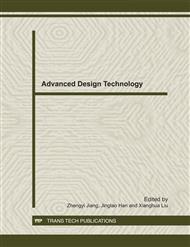p.293
p.297
p.304
p.308
p.312
p.316
p.320
p.325
p.329
Mechanical Bending Simulation of Thin Stainless Steel by Using Isotropic and Orthotropic Properties
Abstract:
The most important factors in hard disk drive suspension manufacturing is the suspension preload, so call “gram load”. The suspensions were generally made from cold rolled stainless steel (SUS304). The suspensions were formed by mechanical forming and gram load was adjusted by mechanical bending until reached a specification. The material properties in mechanical bending simulation of thin stainless steel were usually as isotropic for simple calculation. But the properties of thin stainless steel should be defined as orthotropic materials. Therefore, this work aimed to study gram load results of using isotropic and orthotropic properties. The thin stainless sheet was cut and test for mechanical properties in rolling and transverse directions. The properties of the thin sheet were applied to simulation model. It was found that orthotropic material properties shows a good agreement with the experimental results more than using isotropic material properties. Therefore, the results of this work could be used to explain and predict the mechanical response on the suspension manufacturing.
Info:
Periodical:
Pages:
312-315
Citation:
Online since:
December 2011
Price:
Сopyright:
© 2012 Trans Tech Publications Ltd. All Rights Reserved
Share:
Citation:


